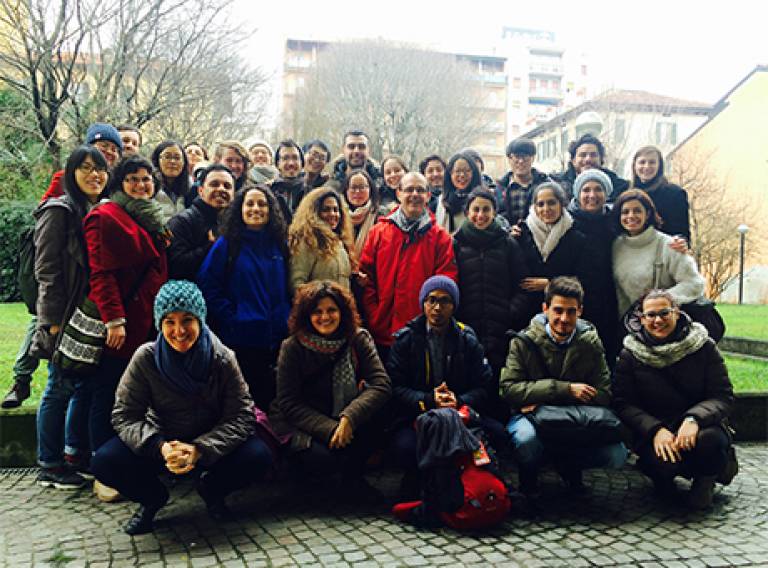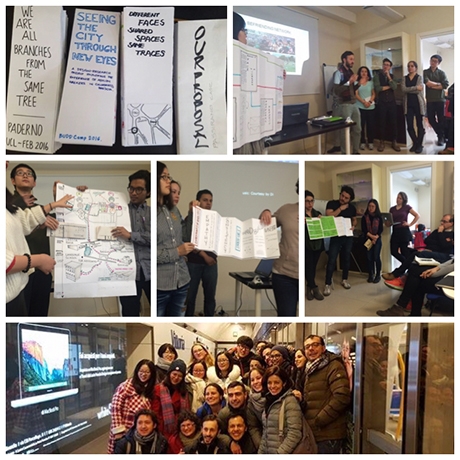Is social integration the approach for connecting refugees and asylum seekers to cities?
9 February 2016

In the face of increasing forced migration, cities have the imperative to deal with refugees and asylum seekers. Their presence in contemporary European cities challenges the ability to create inclusive communities. In this context, students from the MSc in Building and Urban Design in Development (BUDD) run a design charrette in conjunction with the Local Democracy Agency Zavidovici (LDA) in Brescia, Italy. This local association focuses on social and educational projects with immigrants and refugees in Brescia and promotes democracy and peace overseas, especially in the Balkans. LDA currently coordinate the SPRAR project (Sistema di Protezione Richiedenti Asilo e Rifugiati) seeks to improve the integration of forced migrants in the city of Brescia and its surrounded municipalities. The SPRAR project aims to oppose the humanitarian approach where the refugee is seen as a ‘beneficiary’ and the person that needs help, an action that often leads to segregation from the wider urban community. The SPRAR project, instead, aims to stimulate self-awareness, autonomy and inclusion of refugees through individualised and targeted programmes. In this context, BUDD explores the contributions of urban design to address the spatial implications of the challenges of refugees’ integration.
As part of the Building and Urban Design Practice module (BENVGBU3), BUDD students took part in an intensive three-day field experience – BUDDcamp-. The design charrette pursued: a) to investigate the "imaginaries, memories and lives" of asylum seekers and refugees that are part of the SPRAR project and try to uncover narratives of everyday life; and, b) to propose catalytic and strategic interventions that highlight, mobilise, and/or transform existing social tensions at five key locations (i.e. the municipalities of Paderno, Collebeato, Castel Mella, Passirano, and Torbole). Thus, the students explored the potentials and limitations for refugees and asylum seekers’ socio-spatial integration to achieve peaceful coexistence. The BUDD camp is part of a broader pedagogic endeavor to recalibrate the role of urban design expanding its agency to the politics of space production.

The BUDD camp 2016 critically examined current state led integration schemes of ‘Dispersed hospitality’ with municipalities’ mayors, ADL staff and refugees. This scheme operates by decentralising the institutional support of NGO’s and local governments of middle size and small municipalities across the country. The participants uncovered the multi faceted paradoxes that integration schemes for asylum seekers and refugees embody: mobility and immobility, permanence and transiency, legality and illegality, exclusion and inclusion, and dependency and autonomy. The BUDD students used videos to illustrate the spatial narratives of refugees’ ‘suspended lives’ and devised strategic interventions to tackle the in-between space of transition of the urban newcomers. The key proposals revolved around the construction of ‘reciprocal spaces’ and convective networks for fostering familiarity, visibility and empathy. In particular, the interventions concentrated on proposing differential mechanisms to promote linkages among refugees, with economic migrants and local residents. The four groups of students advocated for a) changing the negative perception of refugees and asylum seekers using media, art-based activities in school, and other intergenerational initiatives; b) the promotion of events that rely on non-verbal communication in the urban commons at municipality and city level; and d) valuing the refugee skills as assets to enhance their livelihoods opportunities and appropriation of the spaces of dwelling. The outputs of the BUDD camp were presented to ADL in order to amplify the impact of the partner organization. All the participants were grateful for the impressive learning opportunity and discussed the challenges for governing spaces for integration. Yet many question remains to be further explored: Are cities ready for the integration of refugees and asylum seekers? is the idea of social integration the adequate approach for connecting refugees and asylum seekers to cities?
 Close
Close

